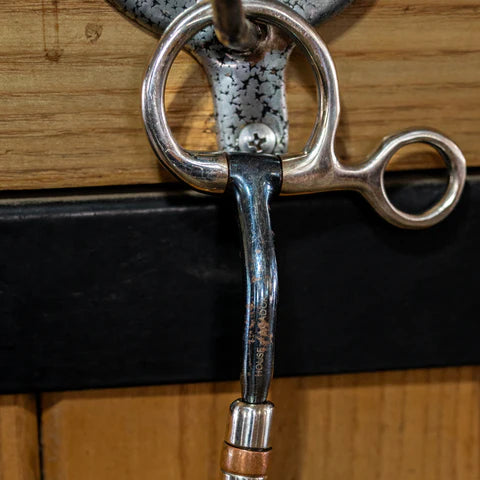
The Ultimate Care Guide for CalmBlue Sweet Iron Bits
Made from sweet iron, a combination of black iron and copper, CalmBlue bits are designed to oxidize, or rust, when exposed to moisture and air. This rusting process is slow and harmless to horses.
The oxidation gives the bit a sweet taste, which is favored by horses and encourages salivation. Increased salivation is important as it helps the horse to accept the bit more readily and maintain a softer, more responsive mouth.
Should I and How Do I Remove Rust from Sweet Iron Bits?
Contrary to what might seem intuitive, the rust on your CalmBlue bit is actually beneficial and should not be completely removed. The rusting process is part of the design and function of these bits, as it contributes to the sweet taste that promotes salivation and bit acceptance in horses.

However, care should be taken to ensure that the rust does not become excessive or create a rough surface, which could cause discomfort or abrasions in the horse’s mouth. For light cleaning, simply wiping the bit after each use is sufficient. If necessary, a gentle sanding with superfine wet/dry sandpaper can be used to smooth out any rough spots.
Best Bit Care Routines
The best care routine for sweet iron bits involves regular maintenance to ensure their longevity and effectiveness. After every ride, wipe the bit clean to remove saliva, food particles, and to slow down the rusting process.
This regular cleaning also allows you to inspect the bit for any damage or excessive wear. The hinged areas of the bit, typically made of stainless steel, should also be checked to ensure they are not seizing up.
For bits that have developed rough surfaces, occasional light sanding can help maintain a smooth finish that is comfortable for the horse.
How to Make Your Bits Last
To ensure the longevity of sweet iron bits, follow these guidelines:
-
Regular Cleaning: Wipe down the bit after every use. This practice not only maintains hygiene but also helps in slowing down the rusting process.
-
Inspection: Regularly inspect the bit for any signs of damage or excessive wear. Pay attention to the smoothness of the bit and the functionality of the hinges.
-
Proper Storage: Store the bits in a dry, clean environment to prevent unnecessary exposure to moisture, which can accelerate rusting.
-
Gentle Maintenance: Avoid aggressive methods to remove rust. If the bit becomes too rough, use a light sanding method to restore smoothness.
-
Replacement When Necessary: Despite good care, bits can wear out. Replace the bit if it develops deep pits, sharp edges, or significant surface irregularities, as these can be uncomfortable or harmful to the horse.
By following these guidelines, you can ensure that your sweet iron bits remain effective and safe for your horse over a longer period.


